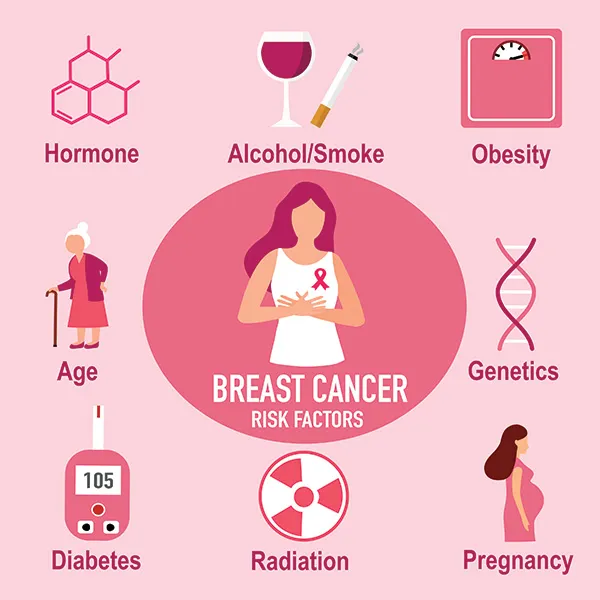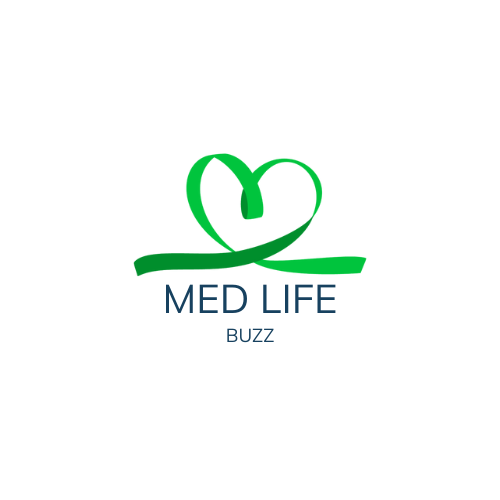
Genetic vs Lifestyle Risk Factors for Breast Cancer
Breast cancer remains one of the most common cancers among women worldwide. While awareness, screening, and treatment options have significantly improved over the years, understanding why breast cancer develops is equally important. Researchers have identified two main categories of risk factors — genetic and lifestyle-related. Both play a vital role in determining a woman’s (and in some cases, a man’s) likelihood of developing breast cancer.
This article explores the key differences between genetic and lifestyle risk factors, how they interact, and what you can do to reduce your overall risk.
Understanding Breast Cancer Risk
Every person has a certain level of risk when it comes to breast cancer. Some factors — like age, gender, or family history — are beyond our control. Others, such as diet, physical activity, and alcohol consumption, are modifiable.
The interplay between genes and lifestyle can be complex. A person may inherit certain mutations that make them more susceptible, but healthy lifestyle choices can still help lower that risk. Conversely, someone without a genetic mutation can develop breast cancer due to unhealthy habits or prolonged exposure to environmental triggers.
Genetic Risk Factors: What You Inherit Matters
1. BRCA1 and BRCA2 Mutations
The most well-known breast cancer genes are BRCA1 and BRCA2. These genes normally help repair damaged DNA and prevent cancerous growth. However, when they mutate, they fail to perform their protective role.
Women with these mutations have up to a 70% lifetime risk of developing breast cancer. They may also have an increased risk of ovarian cancer and other cancers. Genetic testing can help identify these mutations early, allowing for proactive measures such as regular screenings or preventive surgeries.
2. Other Genetic Mutations
Apart from BRCA1 and BRCA2, mutations in other genes like TP53, PALB2, CHEK2, and ATM can also raise the risk. These are less common but still significant. Genetic counseling is crucial for people with a strong family history of breast or ovarian cancer, as it helps assess the probability of inheriting such mutations.
3. Family History
If multiple close relatives — like a mother, sister, or daughter — have been diagnosed with breast cancer, especially at a young age, your risk is higher. This doesn’t always mean you carry a mutation, but it does indicate a genetic predisposition that warrants careful monitoring.
Lifestyle Risk Factors: The Choices You Make
While you can’t change your genes, your daily habits play a major role in influencing breast cancer risk. Let’s look at the key lifestyle-related factors that have been linked to this disease.
1. Diet and Nutrition
A diet rich in fruits, vegetables, whole grains, and lean proteins supports overall hormonal balance and cellular health. On the other hand, consuming too many processed foods, red meats, and sugary drinks can increase inflammation and obesity — both known risk factors for breast cancer.
2. Physical Inactivity
Sedentary lifestyles have been shown to increase breast cancer risk, particularly in postmenopausal women. Engaging in at least 30 minutes of moderate exercise daily can help regulate body weight and hormone levels, reducing overall risk.
3. Alcohol Consumption
Research consistently shows that alcohol increases estrogen levels, which may stimulate breast cell growth. Even small amounts — one drink per day — can slightly raise the risk. Limiting or avoiding alcohol can make a big difference in long-term health.
4. Smoking
Smoking contributes to various cancers, including breast cancer. The harmful chemicals in cigarettes can damage DNA and affect estrogen metabolism, especially in younger women. Quitting smoking benefits not just breast health but overall wellness.
5. Obesity and Hormonal Balance
After menopause, fat tissue becomes the main source of estrogen in the body. Higher estrogen levels from excess fat can promote the growth of certain breast cancer cells. Maintaining a healthy body mass index (BMI) through balanced nutrition and exercise is one of the most effective ways to reduce this risk.
How Genetics and Lifestyle Interact
It’s important to understand that genetics and lifestyle factors don’t work in isolation. For example, someone with a BRCA mutation may never develop breast cancer if they lead a healthy lifestyle and undergo regular screenings. Conversely, a person without any genetic mutations can still develop the disease if they engage in risky behaviors such as heavy drinking or smoking.
This interaction highlights the importance of epigenetics — changes in gene expression influenced by environmental and lifestyle factors. What you eat, how you move, and even how you manage stress can impact how your genes behave.
Can You Prevent Breast Cancer?
While it’s impossible to guarantee prevention, you can significantly lower your risk by combining genetic awareness with positive lifestyle changes:
-
Know your family history and consider genetic testing if necessary.
-
Schedule regular mammograms or breast screenings as recommended by your doctor.
-
Eat a balanced diet high in antioxidants and low in processed foods.
-
Stay active and maintain a healthy weight.
-
Limit alcohol and avoid smoking.
-
Manage stress through mindfulness, yoga, or meditation.
These steps not only reduce cancer risk but also improve your overall quality of life.
When to Seek Medical Advice
If you have a strong family history or carry a known genetic mutation, it’s wise to speak with a genetic counselor or oncologist. They can help you assess your personal risk and recommend preventive strategies such as increased screening or medication.
Even if you don’t have genetic risk factors, regular checkups and self-examinations remain essential for early detection — the most effective weapon against breast cancer.
Final Thoughts
Both genetic and lifestyle risk factors play a role in breast cancer, but lifestyle choices often have the power to offset inherited vulnerabilities. Understanding your personal risk and taking proactive steps toward prevention can make all the difference.
Remember, your genes may load the gun — but your lifestyle pulls the trigger. By living mindfully, eating well, and staying active, you can take meaningful control over your breast health and overall well-being.
